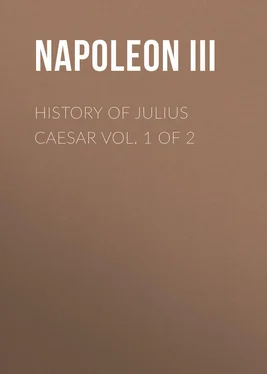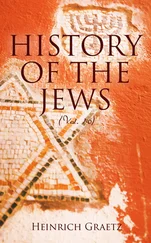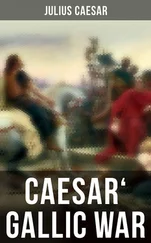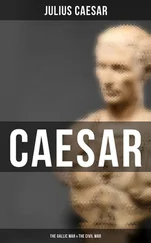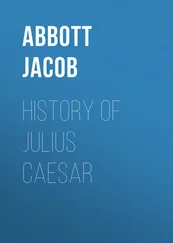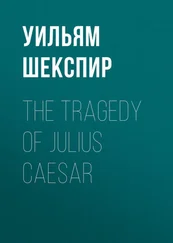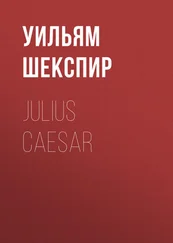Napoleon III - History of Julius Caesar Vol. 1 of 2
Здесь есть возможность читать онлайн «Napoleon III - History of Julius Caesar Vol. 1 of 2» — ознакомительный отрывок электронной книги совершенно бесплатно, а после прочтения отрывка купить полную версию. В некоторых случаях можно слушать аудио, скачать через торрент в формате fb2 и присутствует краткое содержание. Жанр: foreign_antique, foreign_prose, Биографии и Мемуары, на английском языке. Описание произведения, (предисловие) а так же отзывы посетителей доступны на портале библиотеки ЛибКат.
- Название:History of Julius Caesar Vol. 1 of 2
- Автор:
- Жанр:
- Год:неизвестен
- ISBN:нет данных
- Рейтинг книги:5 / 5. Голосов: 1
-
Избранное:Добавить в избранное
- Отзывы:
-
Ваша оценка:
- 100
- 1
- 2
- 3
- 4
- 5
History of Julius Caesar Vol. 1 of 2: краткое содержание, описание и аннотация
Предлагаем к чтению аннотацию, описание, краткое содержание или предисловие (зависит от того, что написал сам автор книги «History of Julius Caesar Vol. 1 of 2»). Если вы не нашли необходимую информацию о книге — напишите в комментариях, мы постараемся отыскать её.
History of Julius Caesar Vol. 1 of 2 — читать онлайн ознакомительный отрывок
Ниже представлен текст книги, разбитый по страницам. Система сохранения места последней прочитанной страницы, позволяет с удобством читать онлайн бесплатно книгу «History of Julius Caesar Vol. 1 of 2», без необходимости каждый раз заново искать на чём Вы остановились. Поставьте закладку, и сможете в любой момент перейти на страницу, на которой закончили чтение.
Интервал:
Закладка:
Caria, Lycia, and Cilicia.
XIV. On the southern coast of Asia Minor, some towns still sustained the rank they had attained one or two centuries before. The capital of Caria was Halicarnassus, a very strong town, defended by two citadels, 385and celebrated for one of the finest works of Greek art, the Mausoleum . In spite of the extraordinary fertility of the country, the Carians were accustomed, like the people of Crete, to engage as mercenaries in the Greek armies. 386On their territory stood the Ionian town of Miletus, with its four ports. 387The Milesians alone had civilised the shores of the Black Sea by the foundation of about eighty colonies. 388
In turn independent, or placed under foreign dominion, Lycia, a province comprised between Caria and Cilicia, possessed some rich commercial towns. One especially, renowned for its ancient oracle of Apollo, no less celebrated than that of Delphi, was remarkable for its spacious port; 389this was Patara, which was large enough to contain the whole fleet of Antiochus, burnt by Fabius in 565. 390Xanthus, the largest town of the province, to which place ships ascended, only lost its importance after having been pillaged by Brutus. 391Its riches had at an earlier period drawn upon it the same fate from the Persians. 392Under the Roman dominion, Lycia beheld its population decline gradually; and of the seventy towns which it had possessed, no more than thirty-six remained in the eighth century of Rome. 393
More to the east, the coasts of Cilicia were less favoured; subjugated in turn by the Macedonians, Egyptians, and Syrians, they had become receptacles of pirates, who were encouraged by the kings of Egypt in their hostility to the Seleucidæ. 394From the heights of the mountains which cross a part of the province, robbers descended to plunder the fertile plains situated on the eastern side ( Cilicia Campestris ). 395Still, the part watered by the Cydnus and the Pyramus was more prosperous, owing to the manufacture of coarse linen and to the export of saffron. There stood ancient Tarsus, formerly the residence of a satrap, the commerce of which had sprung up along with that of Tyre; 396and Soli, on which Alexander levied an imposition of a hundred talents as a punishment for its fidelity to the Persians, 397and which, by its maritime position, excited the envy of the Rhodians. 398These towns and other ports entered, after the battle of Ipsus, into the great commercial movement of which the provinces of Syria became the seat.
Syria.
XV. By the foundation of the empire of the Seleucidæ, Greek civilisation was carried into the interior of Asia, where the immobility of Eastern society was succeeded by the activity of Western life. Greek letters and arts flourished from the Sea of Phœnicia to the banks of the Euphrates. Numerous towns were built in Syria and Assyria, with all the richness and elegance of the edifices of Greece; 399some were almost in ruins in the time of Pliny. 400Seleucia, founded by Seleucus Nicator, at the mouth of the Orontes, and which received, with five other towns built by the same monarch, the name of the head of the Græco-Syrian dynasty, became a greatly frequented port. Antioch, built on the same river, rivalled the finest towns of Egypt and Greece by the number of its edifices, the extent of its places, and the beauty of its temples and statues. 401Its walls, built by the architect Xenæos, passed for a wonder, and in the Middle Ages their ruins excited the admiration of travellers. 402Antioch consisted of four quarters, having each its own enclosure; 403and the common enclosure which surrounded them all appears to have embraced an extent of six leagues in circumference. Not far from the town was the delightful abode of Daphne, where the wood, consecrated to Apollo and Diana, was an object of public veneration, and the place where sumptuous festivals were celebrated. 404Apamea was renowned for its pastures. Seleucus had formed there a stud of 30,000 mares, 300 stallions, and 500 elephants. 405The Temple of the Sun at Heliopolis (now Baalbek ) was the most colossal work of architecture that had ever existed. 406
The power of the empire of the Seleucidæ went on increasing until the time when the Romans seized upon it. Extending from the Mediterranean to the Oxus and Caucasus, this empire was composed of nearly all the provinces of the ancient kingdom of the Persians, and included peoples of different origins. 407Media was fertile, and its capital, Ecbatana, which Polybius represents as excelling in riches and the incredible luxury of its palaces the other cities of Asia, had not yet been despoiled by Antiochus III.; 408Babylonia, once the seat of a powerful empire, and Phœnicia, long the most commercial country in the world, made part of Syria, and touched upon the frontiers of the Parthians. Caravans, following a route which has remained the same during many centuries, placed Syria in communication with Arabia, 409whence came ebony, ivory, perfumes, resins, and spices; the Syrian ports were the intermediate marts for the merchants who proceeded as far as India, where Seleucus I. went to conclude a treaty with Sandrocottus. The merchandise of this country ascended the Euphrates as far as Thapsacus, and thence it was exported to all the provinces. 410Communications so distant and multiplied explain the prosperity of the empire of the Seleucidæ. Babylonia competed with Phrygia in embroidered tissues; purple and the tissues of Tyre, the glass, goldsmiths’ work, and dyes of Sidon, were exported far. Commerce had penetrated to the extremities of Asia. Silk stuffs were sent from the frontiers of China to Caspiæ Portæ, and thence conveyed by caravans at once towards the Tyrian Sea, Mesopotamia, and Pontus. 411Subsequently, the invasion of the Parthians, by intercepting the routes, prevented the Greeks from penetrating into the heart of Asia. Hence Seleucus Nicator formed the project of opening a way of direct communication between Greece and Bactriana, by constructing a canal from the Black Sea to the Caspian Sea. 412Mines of precious metals were rather rare in Syria; but there was abundance of gold and silver, introduced by the Phœnicians, or imported from Arabia or Central Asia. We may judge of the abundance of money possessed by Seleucia, on the Tigris, by the amount of the contribution which was extorted from it by Antiochus III. (a thousand talents). 413The sums which the Syrian monarchs engaged to pay to the Romans were immense. 414The soil gave produce equal in importance with that of industry. 415Susiana, one of the provinces of Persia which had fallen under the dominion of the Seleucidæ, had so great a reputation for its corn, that Egypt alone could compete with it. 416Cœle-Syria was, like the north of Mesopotamia, in repute for its cattle. 417Palestine furnished abundance of wheat, oil, and wine. The condition of Syria was still so prosperous in the seventh century of Rome, that the philosopher Posidonius represents its inhabitants as indulging in continual festivals, and dividing their time between the labours of the field, banquets, and the exercises of the gymnasium. 418The festivals of Antiochus IV., in the town of Daphne, 419give a notion of the extravagance displayed by the grandees of that country.
The military forces assembled at different epochs by the kings of Syria enable us to estimate the population of their empire. In 537, at the battle of Raphia, Antiochus had under his command 68,000 men; 420in 564, at Magnesia, 62,000 infantry, and more than 12,000 horsemen. 421These armies, it is true, comprised auxiliaries of different nations. The Jews of the district of Carmel alone could raise 40,000 men. 422
The fleet was no less imposing. Phœnicia counted numerous ports and well-stored arsenals; such were Aradus ( Ruad ), Berytus ( Beyrout ), Tyre ( Sour ). This latter town raised itself gradually from its decline. It was the same with Sidon ( Saïde ), which Antiochus III., in his war with Ptolemy, did not venture to attack on account of its soldiers, its stores, and its population. 423Moreover, the greater part of the Phœnician towns enjoyed, under the Seleucidæ, a certain autonomy favourable to their industry. In Syria, Seleucia, which Antiochus the Great recovered from the Egyptians, had become the first port in the kingdom on the Mediterranean. 424Laodicea carried on an active commerce with Alexandria. 425Masters of the coasts of Cilicia and Pamphylia, the kings of Syria obtained from them great quantities of timber for ship-building, which was floated down the rivers from the mountains. 426Thus uniting their vessels with those of the Phœnicians, the Seleucidæ launched upon the Mediterranean considerable armies. 427
Читать дальшеИнтервал:
Закладка:
Похожие книги на «History of Julius Caesar Vol. 1 of 2»
Представляем Вашему вниманию похожие книги на «History of Julius Caesar Vol. 1 of 2» списком для выбора. Мы отобрали схожую по названию и смыслу литературу в надежде предоставить читателям больше вариантов отыскать новые, интересные, ещё непрочитанные произведения.
Обсуждение, отзывы о книге «History of Julius Caesar Vol. 1 of 2» и просто собственные мнения читателей. Оставьте ваши комментарии, напишите, что Вы думаете о произведении, его смысле или главных героях. Укажите что конкретно понравилось, а что нет, и почему Вы так считаете.
